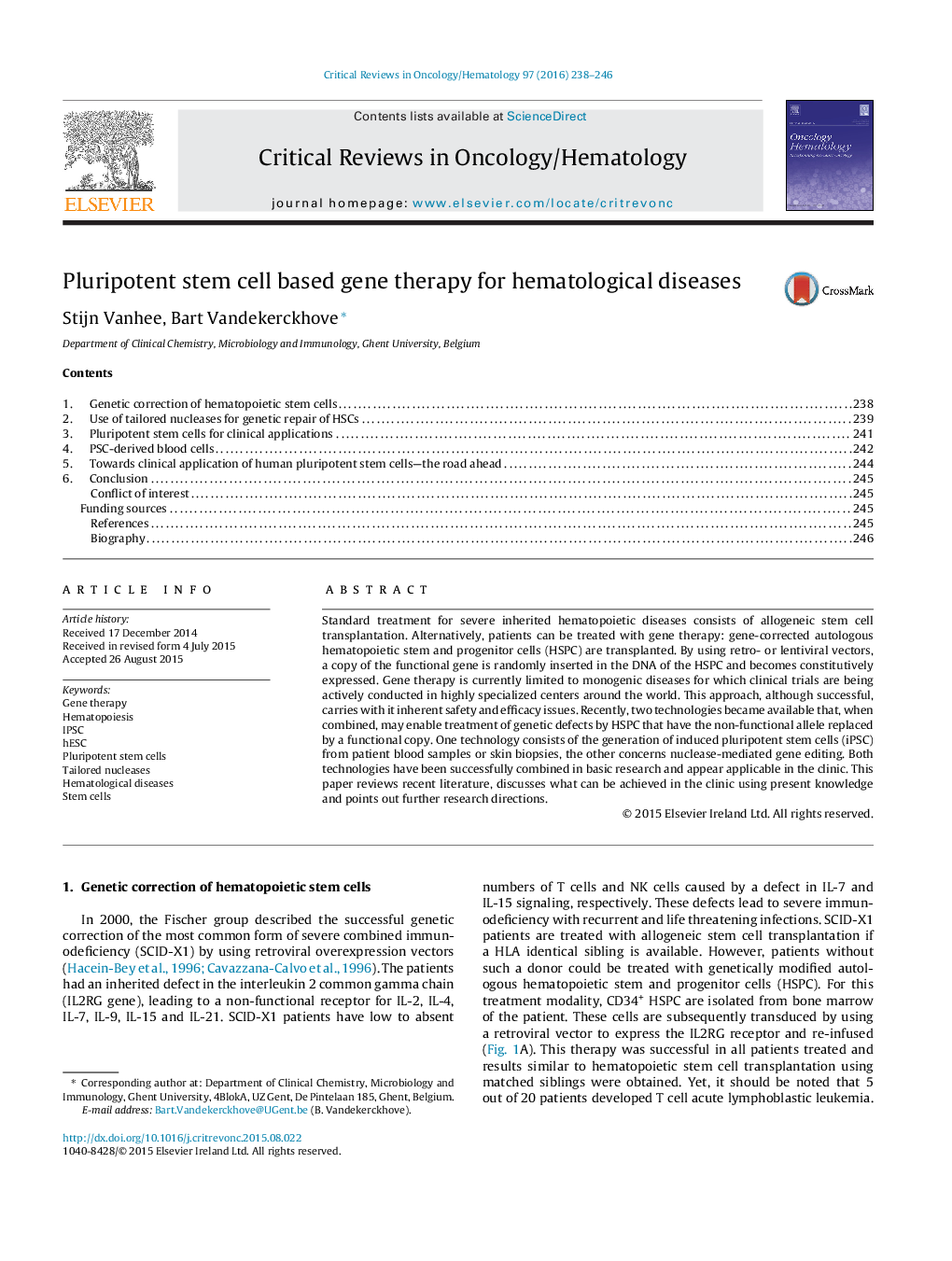| Article ID | Journal | Published Year | Pages | File Type |
|---|---|---|---|---|
| 3328567 | Critical Reviews in Oncology/Hematology | 2016 | 9 Pages |
•We discuss advances and drawbacks of current methods used for gene therapy.•We discuss applicability of current gene editing methods in gene therapy.•We address gene correction methods in pluripotent stem cells for gene therapy.•We address challenges in generating HSCs from pluripotent stem cells.•We focus on hematopoietic cell types readily generated from pluripotent stem cells.
Standard treatment for severe inherited hematopoietic diseases consists of allogeneic stem cell transplantation. Alternatively, patients can be treated with gene therapy: gene-corrected autologous hematopoietic stem and progenitor cells (HSPC) are transplanted. By using retro- or lentiviral vectors, a copy of the functional gene is randomly inserted in the DNA of the HSPC and becomes constitutively expressed. Gene therapy is currently limited to monogenic diseases for which clinical trials are being actively conducted in highly specialized centers around the world. This approach, although successful, carries with it inherent safety and efficacy issues. Recently, two technologies became available that, when combined, may enable treatment of genetic defects by HSPC that have the non-functional allele replaced by a functional copy. One technology consists of the generation of induced pluripotent stem cells (iPSC) from patient blood samples or skin biopsies, the other concerns nuclease-mediated gene editing. Both technologies have been successfully combined in basic research and appear applicable in the clinic. This paper reviews recent literature, discusses what can be achieved in the clinic using present knowledge and points out further research directions.
